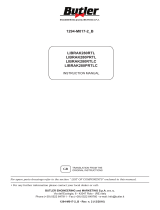
Warning
This manual is a necessary part of the product. Please read carefully.
Keep the manual for later use when maintaining the machine.
This machine can only be used for the designated purposes. Never use it for any other purpose.
The manufacturer is not responsible for the damage incurred by improper use or use other than the
intended purpose.
Precaution
The equipment can only be operated by qualified personnel with special training. Modification to any
components or parts, or use the machine for other purpose without either obtaining the agreement from the producer,
or observing the requirement of the instructions may lead to direct or indirect damage to the equipment.
★The equipment should be installed on the stable ground, not wooden pallet, otherwise not accurate.
Keep the back panel 0.6M away from the wall for good ventilation. Enough room should be left on both
sides for convenient operation.
Do not put the equipment a place with high temperature or moisture, or near the heating system, water tap,
air-humidifier or chimney.
Avoid lots of dust, ammonia, alcohol, thinner or spraying binder.
People who are no operating the machines should be kept away when it is used.
Use appropriate equipment and tools, protective and safety equipment, including eyeglasses, earplugs and
working boots.
Pay special attention to the marks on the machine.
Do not touch or approach the moving parts by hand during operating.
Do not remove the safety device or keep it from working properly.





















